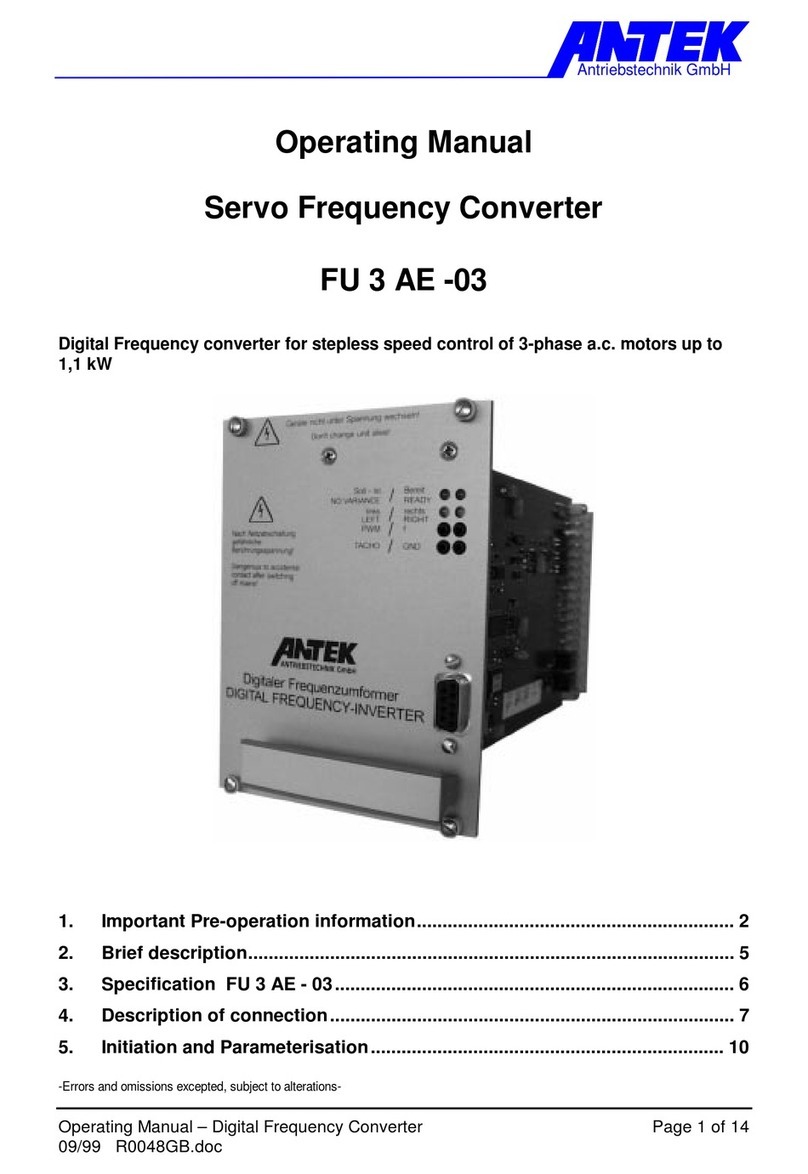Chapter 2: SAFETY
Page 8 of 30 Operating Manual FU3AM-03
Take additional measures to limit consequences of error functions which can prove to be
dangerous for people:
♦other independent devices which safeguard against possible malfunction of the frequency
inverter.
♦electrical and non-electrical safety devices (locking or mechanical stops )
♦measures covering the system
Take appropriate measures to see that in case of malfunctioning of frequency inverter there
is no material damage.
When work is being carried out on live equipment, the relevant accident prevention regula-
tions must be obeyed.
For reasons of safety and of maintaining documented system data and functions, repairs to
the unit or its components are to be carried out only by the manufacturer.
No liability is accepted for inappropriate, incorrect manual or automatic setting of the param-
eters for the drive.
2.4 Operator Responsibilities
Responsibilities of the operator or safety officer:
♦to ensure adherence to all relevant directives, instructions and laws,
♦to ensure that only qualified personnel operate on or with the frequency inverter,
♦to ensure that the operating manual is available to all personnel.
♦to ensure that unqualified personnel do not work with the frequency inverter.
♦The operator is responsible for ensuring that the motor, the inverter and ancillary equip-
ment are installed and connected in accordance with the technical rules applicable in the
country in which installation is taking place and with other regulations which are applicable
regionally. In this context, special consideration must be given to cable.
2.5 Personnel
Only qualified personnel .may work on or with the inverter.
2.6 Instructions on unpacking, mounting and installation
Check for any transport damage after unpacking the control unit and before the initial start-
up.
Check that all plug-in and screwed connections are secure.
Minimum requirements for installation site:
♦The room should be as dust-free as possible (fit filters to
control cabinets which have floor fans).
♦The allowed ambient temperature and the relative air humidity must not to be exceed
(if required provide separate cooling).
♦The inverter causes power loss and heats up the environment. Ensure a sufficient dis-
tance from heat-sensitive equipment.




























